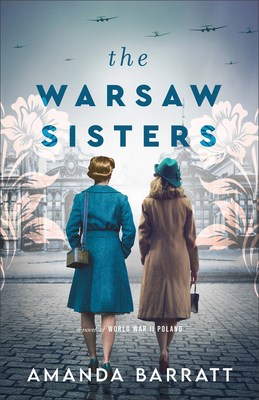Revell Pub
Nov 7th, 2023
The Warsaw Sisters by Amanda Barratt is very relevant today, showing the cruelty inflicted by the Nazis during WWII. As people saw the horrific acts by Hamas on the Jewish people living in Israel they wonder about the true meaning of the words “Never Again.” But just as the Israelis are showing courage, sacrifice, and resilience so are the characters in Barratt’s book. The message is so timely for today: how will people respond to evil.
“I think my book is very relevant today. It is very imperative we remember those past times and what happened. We need future generations to never forget.”
The story takes place in Warsaw from the invasion of Poland by Nazi Germany until the end of WWII. Two sisters choose separate ways to resist their homeland; Antonia joins a courageous group of women who risk their own lives to shelter Jewish children, while Helena joins a secret army fighting to free their country from German occupation. When Antonina’s beloved Marek is forced behind ghetto walls along with the rest of Warsaw’s Jewish population, Antonina turns her worry into action and becomes a key figure in a daring network of women risking their lives to shelter Jewish children. Helena finds herself drawn into the ranks of Poland’s secret army, joining the fight to free her homeland from occupation.
“The book was inspired by a true story of women in Poland during WWII. My characters were not based on any one woman. Antonia is very angry when the Germans evaded Poland, especially since she is in love with a Jewish violinist named Marek. She was drawn into the plight of the Jewish people because of her love and relationship with him. As the war progressed it becomes less about him and more about the genocide of the Jewish people.
My character Antonia was inspired by the women who led Jewish children out of the ghetto, particularly Irena Sendler whose story has become legendary. As Antonia does, many women sheltered the children in their homes.”
“Helena is quieter. After the rift between her and her sister she is forced to see what is really going on. She becomes involved in the home army, the resistance. Helena was inspired by those women who served in the uprising, nearly 12,000 who fought the German occupation including the Warsaw uprising. I wanted to illuminate the courage of both sisters.”
The book emphasizes the true historical facts of The Warsaw Ghetto Uprising, the Katyn Massacre, and the Home Army are incorporated to give a wider lens to the situation. “I wanted to show how there was antisemitism throughout Poland. It was seen in the universities to Jewish children not able to attend certain schools. The Warsaw Ghetto was the largest in occupied Europe. People were compressed into a very small area by the Nazis. People died of starvation and disease. It was horrific and dehumanizing conditions.”
But the author also explains the difference between the two uprisings in Warsaw. “Warsaw is known as the city of two uprisings. The Jewish ghetto uprising took place in 1943. My character Antonia is a witness to that on the other side of the wall. The Warsaw Uprising is not a well-known story of resistance. I focused on the city-wide uprising of 1944 done by the Polish resistance. They wanted to be seen as the true liberators. Unfortunately, it ended in their surrender after the Germans retook the city and massacred civilians as the Polish army was being pushed back. It is an incredible story of resistance as the Polish people dared to rise and take a stand.”
The author wants readers to understand how the sisters “chose a different path of resistance which drew them apart throughout the novel. They both showed a different kind of courage. It is a story of how ordinary people stood up during these extraordinary times. They both become brave as they are forced to face the occupation of their homeland. It is a courage of necessity, but it is very compelling.”
The story does not sugarcoat or mask the privations of war, the cruelty of the Nazi regime, or the crimes perpetrated against the people of Poland, especially the Jewish population. It’s a novel of survival of spirit and faith. It’s an emotional story of love, courage, and heroism along with heartbreak, loss and suffering.

